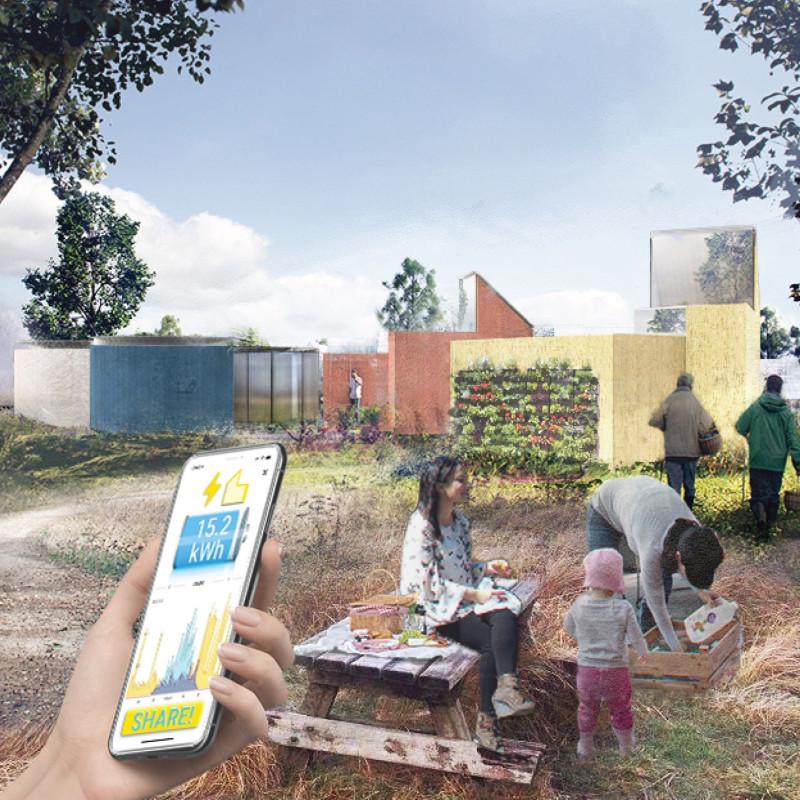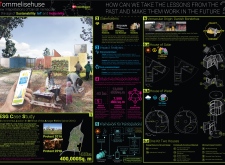5 key facts about this project
Tommelisehuse is located in Copenhagen and aims to create sustainable urban living while protecting the important green area of Amager Fælled, which faces the risk of development. The design uses traditional Danish housing as its foundation, incorporating modern architectural practices and technologies. The goal is to balance urban density with natural elements, fostering community involvement and environmental care.
Architectural Concept
The design draws inspiration from the Danish Bondehus, offering a modern take on a cultural classic. It addresses contemporary housing needs by introducing microhome typologies that can accommodate around 2000 people on just 5 hectares. This arrangement promotes dense living while being mindful of the surrounding environment.
Sustainability Framework
A key part of the project is its strong sustainability framework, featuring both the House of Solar and the House of Water. The House of Solar utilizes low-energy Internet of Things (IoT) sensors, which help create a connected living environment. This arrangement improves energy efficiency and allows for real-time monitoring of energy use. By implementing these technologies, the design aims to lessen the overall impact on the environment while ensuring residents’ comfort.
Resource Management
The House of Water focuses on effective resource use, integrating systems that promote water efficiency and storage. This part of the design aims to reduce water waste and encourage sustainable habits among residents. It tackles the challenges of urban water management, making sure the project supports the needs of its community while prioritizing environmental responsibility.
Technical Details
Photovoltaic cell panels and hydrophobic coating roofs are key features, enhancing the energy performance of the homes. These technologies contribute to the self-sufficiency of the microhomes and reflect a commitment to sustainable practices. The layout and architectural details emphasize thoughtful interaction with both social and environmental contexts, positioning Tommelisehuse as a model for future urban developments.


















































